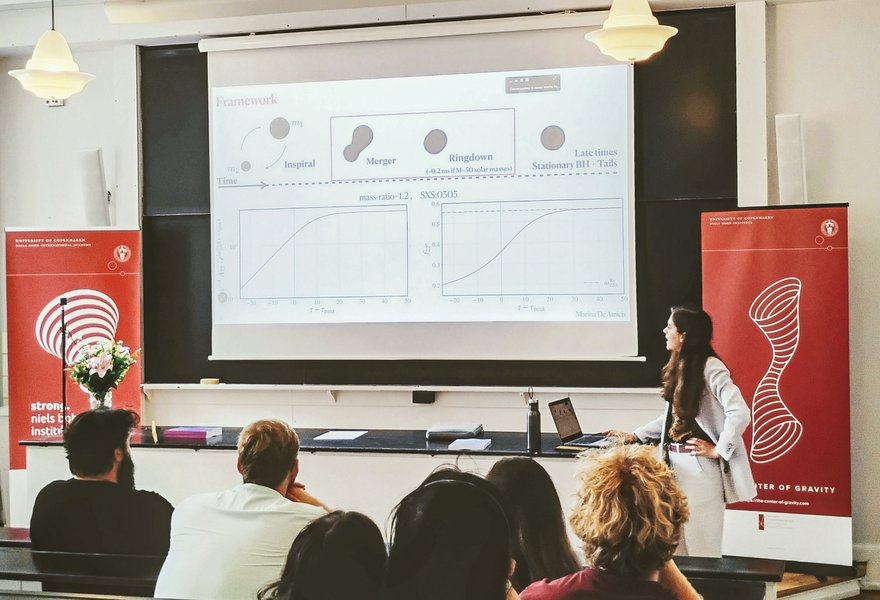Marina De Amicis successfully defends her thesis

On September 1st, Marina De Amicis successfully defended her PhD thesis, titled "Source-driven black hole relaxation: imprint of the two-body dynamics". In this thesis, Marina explored the post-merger signal emitted by a black hole binary coalescence, focusing on the limit in which one of the black holes is significantly smaller than the other.
Exploiting the Green's function approach, Marina was able to find a first-principles, dynamical description of the excitation of the quasi-normal modes and the tail responses, directly relating these features to the inspiral two-body problem. The thesis marked a significant improvement in our understanding of a portion of the relativistic two-body problem that had been poorly explored in the past. Standard post-merger waveform models, in fact, rely purely on phenomenological descriptions of the signal, significantly limiting our ability to perform General Relativity tests through observations.
Marina's thesis also explored the fully non-linear regime of General Relativity, showcasing the presence of late-time tails in the post-merger signal emitted by a comparable-mass binary. Surprisingly, Marina and her collaborators found that non-linearities can impact this portion of the signal, in a work which has recently been accepted for publication in Physical Review Letters.
After an initial 50-minute presentation, during which Marina explained the problem addressed in the thesis and discussed her results, she defended her work before a committee of world-leading experts in the field: Professor Eric Poisson (University of Guelph), Professor Gaurav Khanna (University of Rhode Island), and Professor Emil Bjerrum-Bohr (NBI). Marina successfully answered the questions of the referees, who were intrigued and impressed by the results of the thesis.
Marina is about to start a postdoctoral position at Perimeter Institute, where she will work with Professor Luis Lehner and Professor William East, to advance our understanding of gravity in the strong-field regime.
Sept. 10, 2025, 10:54 a.m.